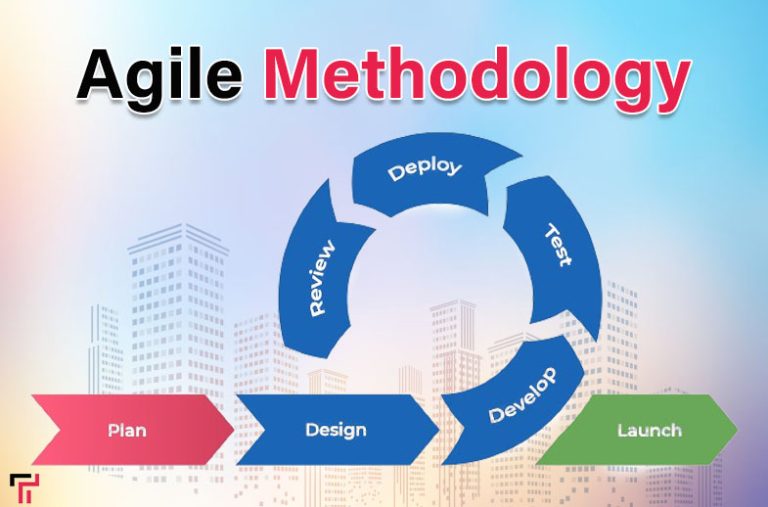In today’s fast-growing business world, the ones who are the most adaptable and responsive are the ones who lead the way. The Agile methodology brings about a big change in the way teams work, as they do not follow the traditional hierarchy but rather democratise the team’s ways of interactions, innovating, and delivering value. Also, it redefines the management tasks in the projects.
Whether you are a beginner in Agile and are keen to dig deeper for a better understanding or a self-confident professional who has had software development experience. In this blog, which is about Agile Methodology, we will cover every aspect of it: the primary ideas and techniques, for example.
The Origins of Agile Methodology
The agile model was developed in the late 90s due to the rising speed of software development exceeding the competence of the conventional project management models. Unsatisfied by the constraints of traditional approaches that Waterfall used, some programmers based the trail toward better approaches. By instating these principles, they formulated the Agile Manifesto in 2001, which puts individuals and interactions above processes and tools, working software above comprehensive documentation, customer collaboration above contract negotiation, and responding to change instead of following a plan.
Key Principles of Agile
Agile principles of process and behavior are based on twelve guide points that team of Agile practices and behaves by. The principles emphasise customer satisfaction through the early and continuous delivery of high value software, welcoming change to outrival the competition, the frequent roll-out of working software, involvement of business stakeholders and developer’s teams collaboration and the sustainable working tempo.
Agile Frameworks and Methodologies
Agile is not a universal method. It is made up of a variety of frameworks and approaches that adequately cater to a wide range of project-related requirements and team dynamics. Whether it is Scrum, having time-boxed iterations and daily stand-up meetings or Kanban, which is concerned with visualising workflow and limiting work in progress, or Lean which focuses on maximising customer value while minimising waste, Agile have a wide palette of frameworks to choose from.
Implementing Agile in Practice
Implementing Agile methodology requires a cultural shift within organisations and a commitment to embracing iterative and collaborative practices. Teams typically start by defining their product vision and breaking down work into manageable chunks, known as user stories or tasks. Team meetings such as planning, review and retrospective meetings that are conducted frequently would ensure that the team will keep tracking and will continuously improve their processes. For example, burndown charts, Kanban boards, as well as sprint backlogs help visualise the progress and manage the work effectively.

Benefits of Agile Methodology
Embracing Agile methodology by organisations and teams helps in exploiting various advantages. Through the system of delivering working software incrementally, the Agile approach allows for faster time-to-market and higher responsiveness to customer feedback. The Agile approach is iterative in nature and forms a culture of continuous improvement with teams learning from each of the iteration and adapting accordingly. Additionally, Agile coaches’ teamwork encourages more transparency since the cross-functional members reciprocate and work together to arrive at common objectives. Below are some benefits of Agile Methodology:
- In comparison to conventional project delivery approaches, release of working software in sections allows shorter release cycles with a high frequency adapted to market changes.
- Agile promotes customer engagement, and any changes in line with customer feedback can be generated and included in the product innovations in real time.
- The agile approach provides the environment for learning and adopting, using regular retrospectives and driving improvements and innovations.
- The members of cross-functional teams are focused on working together and promoting collaboration among the departments and the stakeholders.
- The agile approach ability to developing value in small bits enables early detection and prompt resolutions of issues thereby producing software with better quality.
Challenges and Best Practices in Agile
While Agile brings many benefits, it is also characterised by different difficulties. Changing from classic methodologies to Agile is by far the most disruptive step for both business and individuals, as it requires a change in their way of thinking and culture. Furthermore, still the precision between agility and discipline is hard to strike as the managers and the teams look to change priorities and more scope.
Even though Agile practices have some challenges, sticking to the Agile approaches and principles like value-driven approach, open communication and feedback loops certain organisational culture shortcomings can be tackled and the benefits of Agile can be recognised.
Sum Up
Agile methodology takes the software development team to a new level of maturity that allows them to cope with challenges more assertly and bring added value to customers sooner than ever. Adopting iterative development techniques, collaboration among all the departments, and flexibility to change will enable the organisation to stay ahead given the current dynamic business environment. The implementation of Agile may be challenging, but the net benefits are worth it, making it the key element of modern project management systems.







